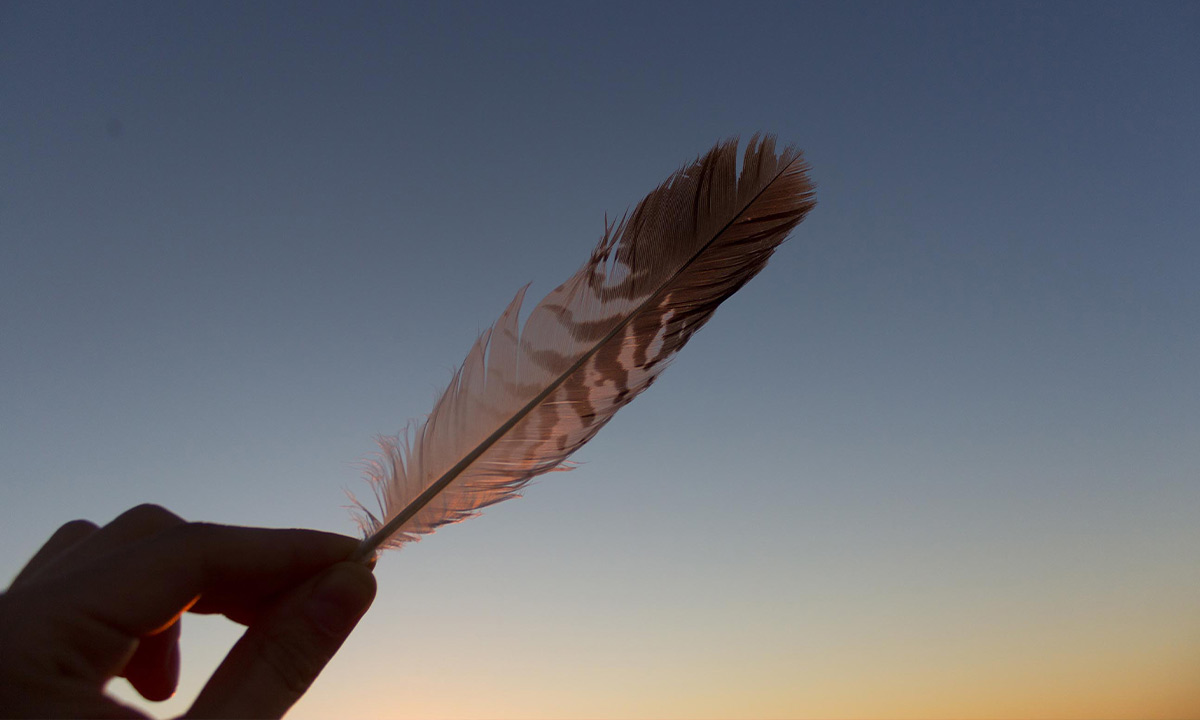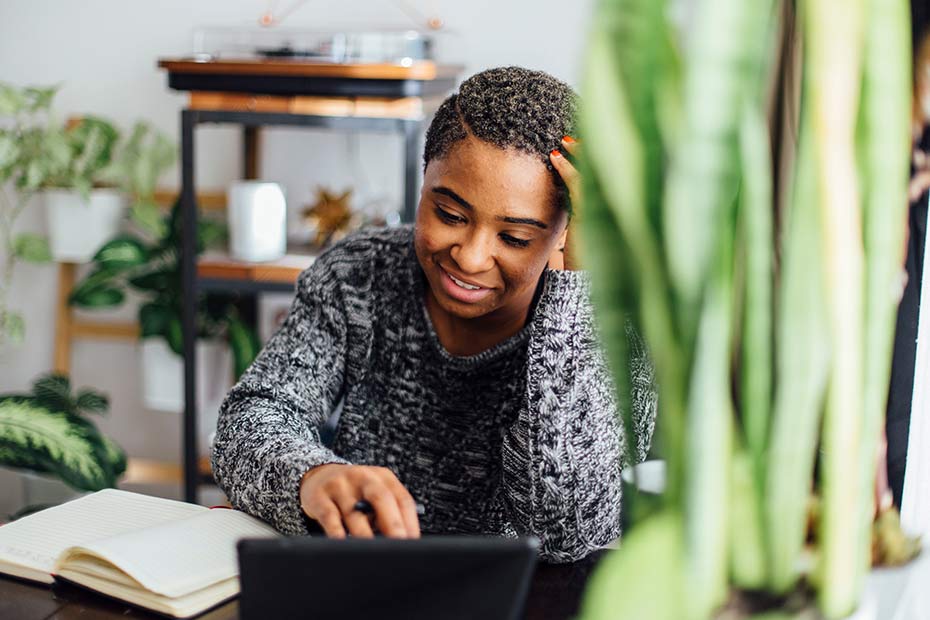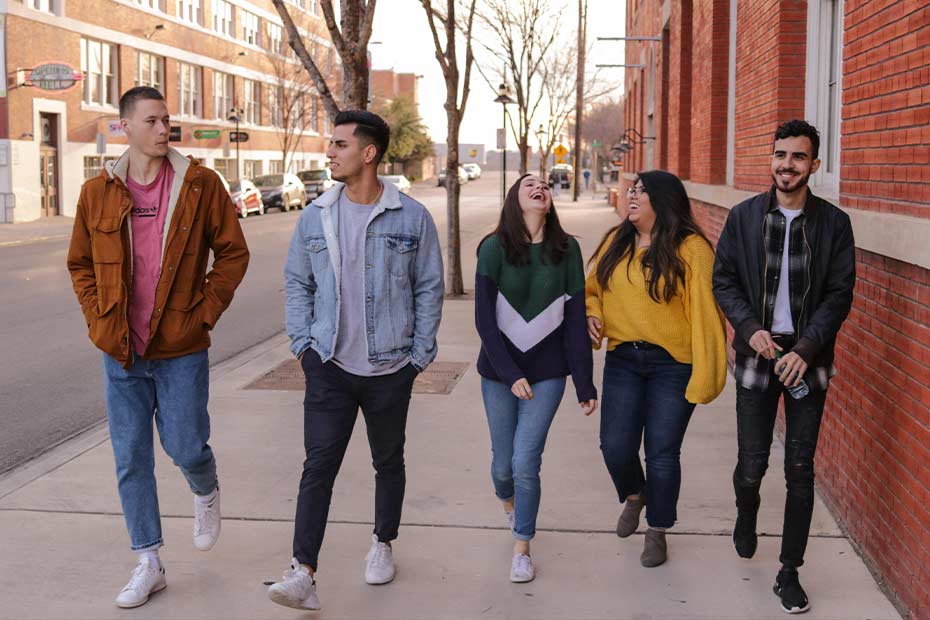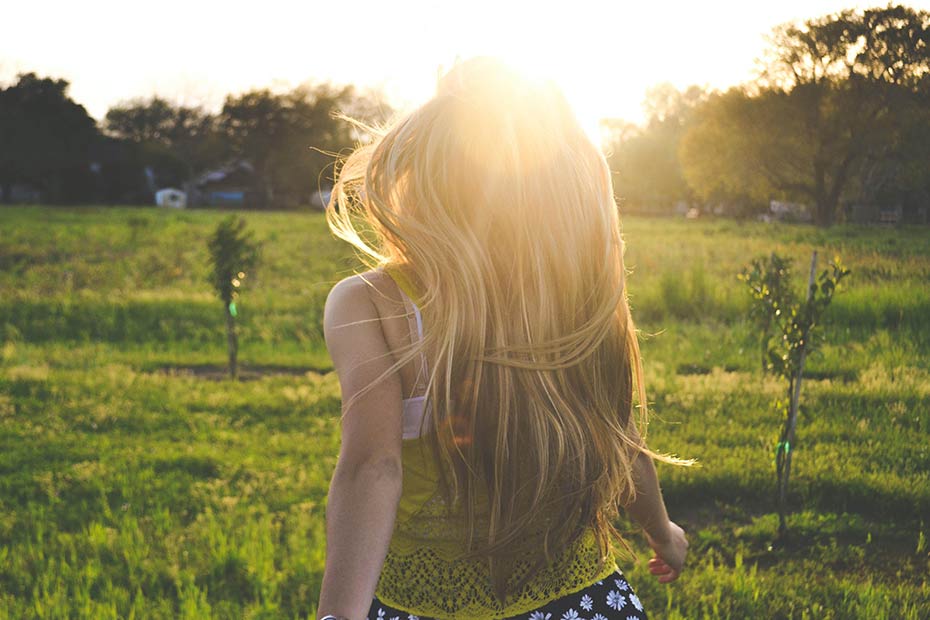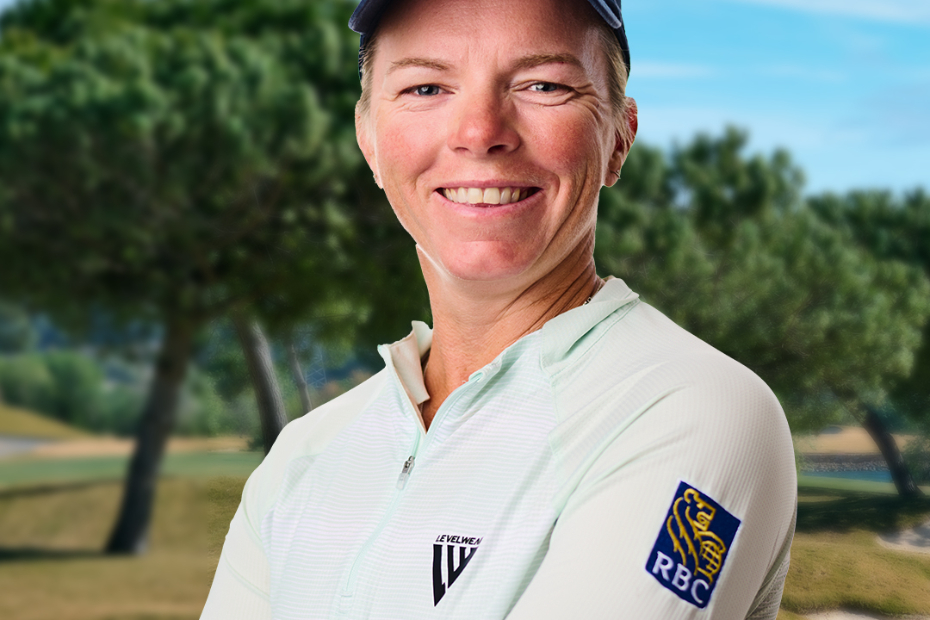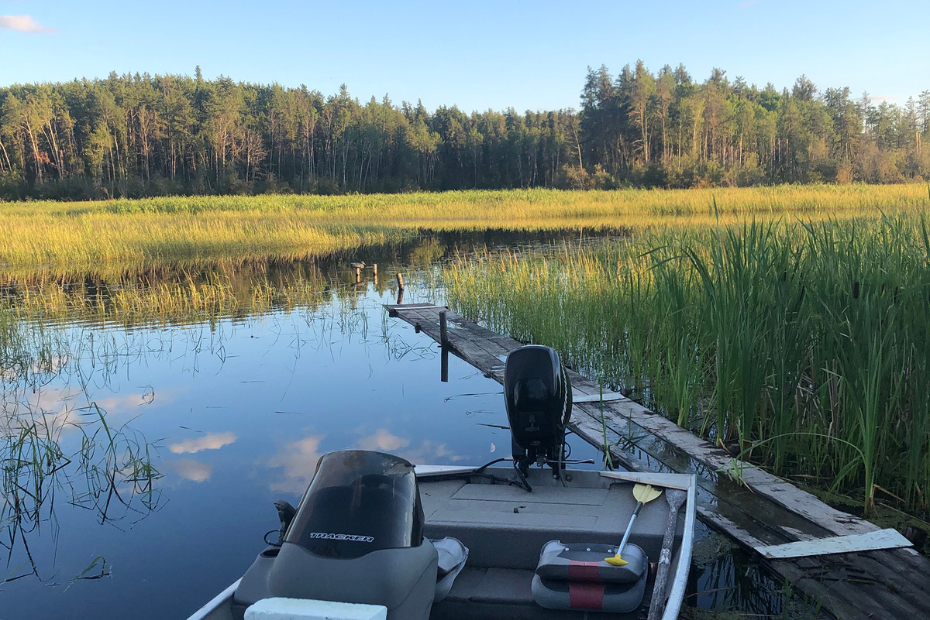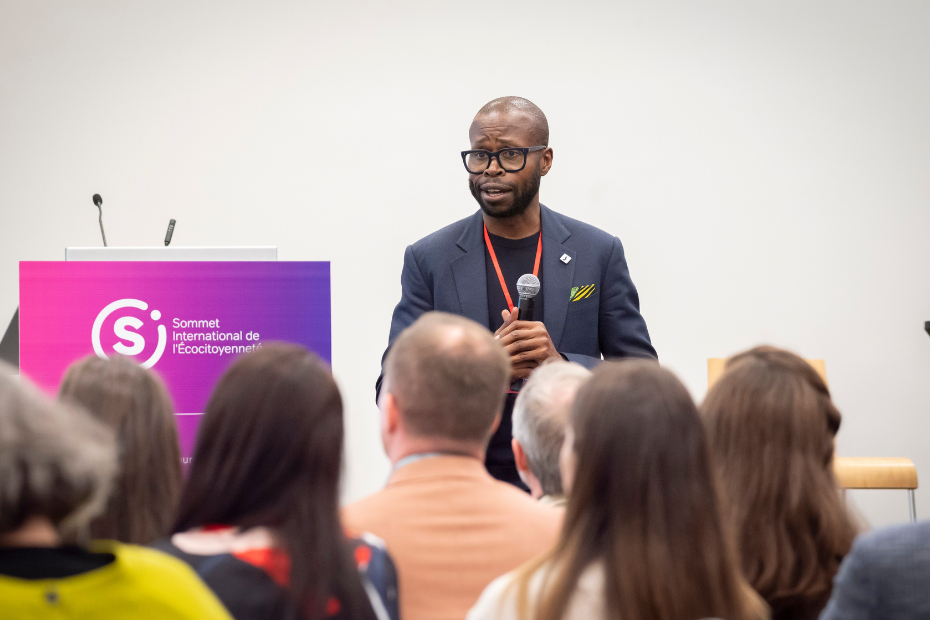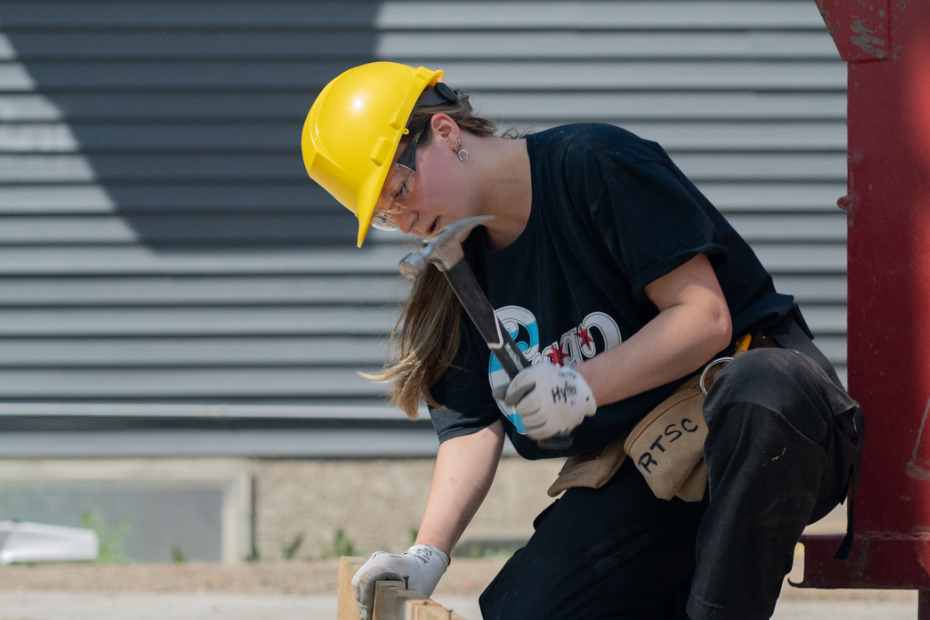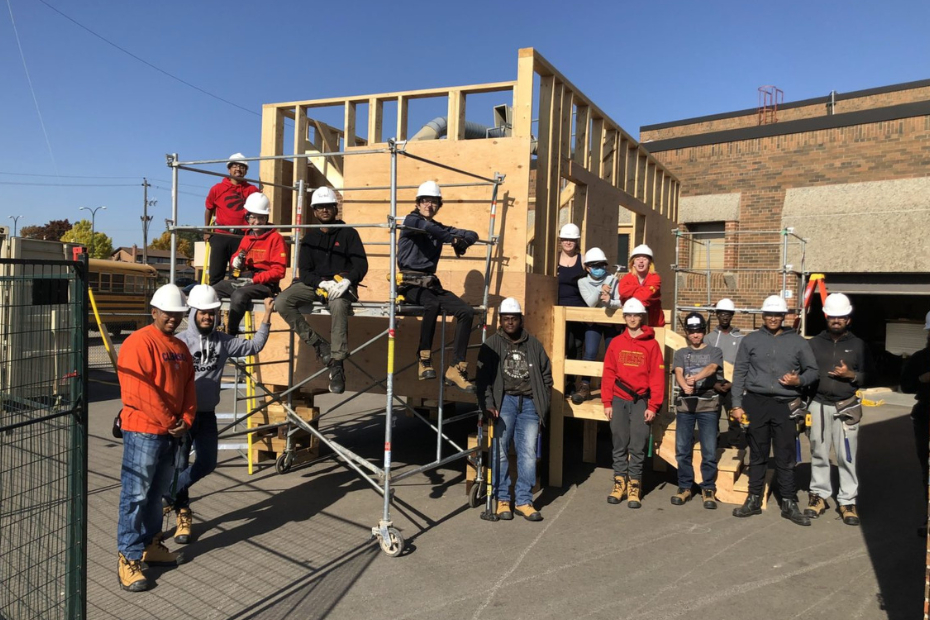MUSIC FADE UP AND UNDER
At the University of Regina in Saskatchewan, Dr. Shadi Beshai is leading an important research project to address the gaps in mental health services for Indigenous university students across Canada.
An associate professor of clinical psychology, Dr. Beshai recently received a grant to develop a flexible, culturally-sensitive manual for mindfulness-based intervention in Indigenous communities for the project: Adapting a Mindfulness-Based Intervention for Depression and Anxiety Symptoms for Use with Indigenous University Students.
The research comes at a critical time, as Indigenous peoples suffer from mental health conditions such as anxiety and depression in greater numbers and severity than non-Indigenous Canadians. Members of Dr. Beshai’s research team include Dr. Brenda Green, an associate professor of Indigenous Health Studies at First Nations University of Canada, and an expert in Indigenous health and Indigenous Research Methods, and Elder Betty McKenna, who is the Elder in residence at the Regina Public School Board. Misty Longman, director of the University of Regina’s ta-tawâw Student Centre is another partner with the project.
Many of the existing mental health interventions are not appropriate for the specific needs of Indigenous peoples, and youth in particular lack access to treatment options that are culturally sensitive and appropriate.
Sharon Desjalais is the former co-lead of the research project. An Indigenous person with Cree heritage and a single mother of a five-year-old son, Sharon holds a Bachelor of Human Justice degree and a Bachelor of Arts in Psychology. She says she sees access to mental healthcare for Indigenous people as a social justice issue.
| SHARON 1 In the past, research has been done on Indigenous people, and by that, I mean that experts would carry out their research without regard for the expressed needs of the community. I am glad to say that this project was community-based. The Indigenous community represented by the students, and elders and other community leaders provided the input that was needed to adapt the program to be culturally-relevant and sensitive to their own needs. RUNS: 28 secs |
Sharon added that working with the students was inspiring and helped her gain new perspectives of mindfulness and resilience.
| SHARON 2 The students who participated deal daily with racism, discrimination, and many deal with the impacts of genocide and subsequent intergenerational trauma. On top of that, they deal with the usual stress of getting a university education. Despite all that, they gather strength and resilience from their community, culture and traditional practices. Work on this project increased my understanding of the depth of intergenerational trauma in Indigenous communities and its impact on me personally as the child of a residential school survivor, I also developed a new appreciation of the healing power of culture within a community. RUNS 42 secs |
In this podcast, Kim Ulmer, RBC’s Regional President for Manitoba, Saskatchewan, Nunavut and Western Ontario, spoke to Dr. Beshai to learn more about his work with Indigenous peoples to shape the program, as well as the importance of culturally relevant care in helping to build resilience.
MUSIC FADE UP AND OUT
| KIM 1 Welcome, Dr. Beshai, I’m so excited to engage in a conversation with you today and just delighted that you were able to join us. Before we sit down and really get into the details of the program, could you walk us through the specifics of the program that you’re actively working with? RUNS 14 SECS |
| BESHAI 1 Yeah, absolutely, Kim. The program is funded by the Canadian Institute of Health Research and the project is divided into several phases. The first phase is for us to gather feedback from Indigenous students, and tailor this mindfulness based program to make it suit Indigenous students who have mental health issues such as depression and anxiety symptoms. And in the second phase, we flesh out this information to create a manual on how to conduct mindfulness based interventions specifically for Indigenous students. And finally, the third phase is going to be focused on actually delivering this tailored intervention and seeing how well it works. So we’ve had about 20 Indigenous students involved, there are several other researchers involved and we’re very thankful to have many Indigenous elders and Indigenous cultural consultants as well. RUNS 57 SECS |
| KIM2 Tell us a little bit about the program and how it really differentiates itself from other group mental health programs. RUNS 5 SECS |
| BESHAI2 The idea behind the program is to take a program that’s already well established in mental health, namely, a mindfulness based program for improving symptoms of depression and anxiety, and to infuse it with elements and flexibility so that it’s adapted specifically for the needs of Indigenous university students. It’s unique in multiple ways. So first of all, it’s organically made in the sense that we drew on Indigenous ways of knowing, such as the use of talking circles for example to gather information directly from Indigenous students. And secondly, the program borrows from ancient wisdom related to the concept of what we call mindfulness. And mindfulness here could be defined as paying attention, on purpose to present moment experiences with an attitude of acceptance or curiosity. In many ways, mindfulness is already fairly consistent with Indigenous cultures and traditions. So we took the feedback of Indigenous students to make it more culturally relevant. RUNS 1:04 |
| KIM3 Building on that, how important is culturally relevant care in helping young Indigenous peoples build resilience? RUNS 6 SECS |
| BESHAI3 It’s extremely important. I think people seeking mental health care need to know that they are well represented, that they’re listened to, that their cultures are respected in the process of self care. And secondly infusing cultural elements into mental health care could have the added benefit of actually improving resilience by harnessing the power of being culturally connected and represented. RUNS 25 SECS |
| KIM4 What have you personally learned from Indigenous culture that has helped you shape and maybe even reshape the program, and what have you learned working with the program participants? RUNS 16 SECS |
| BESHAI4 We learned quite a bit really. We learned that Indigenous students would find the program more acceptable and culturally relevant for them. If they’re able to cultivate mindfulness through the practice of Indigenous ceremonies. We also learned that the program has to take a holistic approach towards health and mental health. So this includes having discussions about physical, mental and spiritual well being. And the program participants also let us know that we need to improve the authenticity of these programs and to do so they told us that we need to replace some of the terminology and make it more consistent with Indigenous terminologies and actually a lot of them wanted an Indigenous facilitator. And of course, the students mentioned that they need additional flexibility built right into the program, so that they’re able to access program sessions and activities on their own time. RUNS 54 SECS |
| KIM5 COVID has had such a tremendous impact on all of our lives … do you believe that the youth that you’re dealing with have built up another level of resiliency throughout the pandemic? RUNS 13 SECS |
| BESHAI5 I think Indigenous students have a tremendous amount of resilience to be able to navigate the stress that they experience on a daily basis. Unfortunately, however, many lack opportunities to be able to practice self care in a culturally appropriate way. And so this program that we’re building will hopefully provide culturally sensitive and appropriate ways to continue to build resilience. RUNS 22 SECS |
| KIM7 What would you suggest that could be a call to action for each one of us on mental health and wellness? RUNS 6 SECS |
| BESHAI6 Mental health is unfortunately extremely neglected, even when compared to something like physical health. It’s only very recently that we started talking and thinking about the impact of mental health as Canadians. So first of all, I really do I hope that we continue to make mental health really a central piece in our conversations. But not only that – mental health is a partnership, that there is a lot that we can learn from people around the world. There’s a lot we can learn from different cultures and different mindsets. It’s important for us to view mental health in this particular way because it shows us the really all in it together. RUNS 30 SECS |
| KIM8 Dr. Beshai thank you so much for enlightening us and for encouraging us to continue on the conversation for mental health and wellness, and for the work that you do in our Indigenous communities BESHAI I was very happy to have this conversation with you, Kim, thank you very much for having me. RUNS 13 SECS |
For more information about Dr. Beshai’s research at the University of Regina, visit the website uregina.ca.
To learn more about RBC’s commitment to enhancing youth mental well-being, visit the RBC Future Launch website at rbc.com/futurelaunch.
MUSIC FADE UP AND OUT
TOTAL RUN TIME: 8:45
As part of RBC Future Launch, RBC is committed to enhancing youth mental well-being, offering access to a wide variety of digital resources that can help cope through challenges, build skills in resilience and even help other youth who may be struggling. Please take some time and explore the link above.
More from the Breakdown Down Barriers: Youth Mental Well Being in Canada:
This article is intended as general information only and is not to be relied upon as constituting legal, financial or other professional advice. A professional advisor should be consulted regarding your specific situation. Information presented is believed to be factual and up-to-date but we do not guarantee its accuracy and it should not be regarded as a complete analysis of the subjects discussed. All expressions of opinion reflect the judgment of the authors as of the date of publication and are subject to change. No endorsement of any third parties or their advice, opinions, information, products or services is expressly given or implied by Royal Bank of Canada or any of its affiliates.








